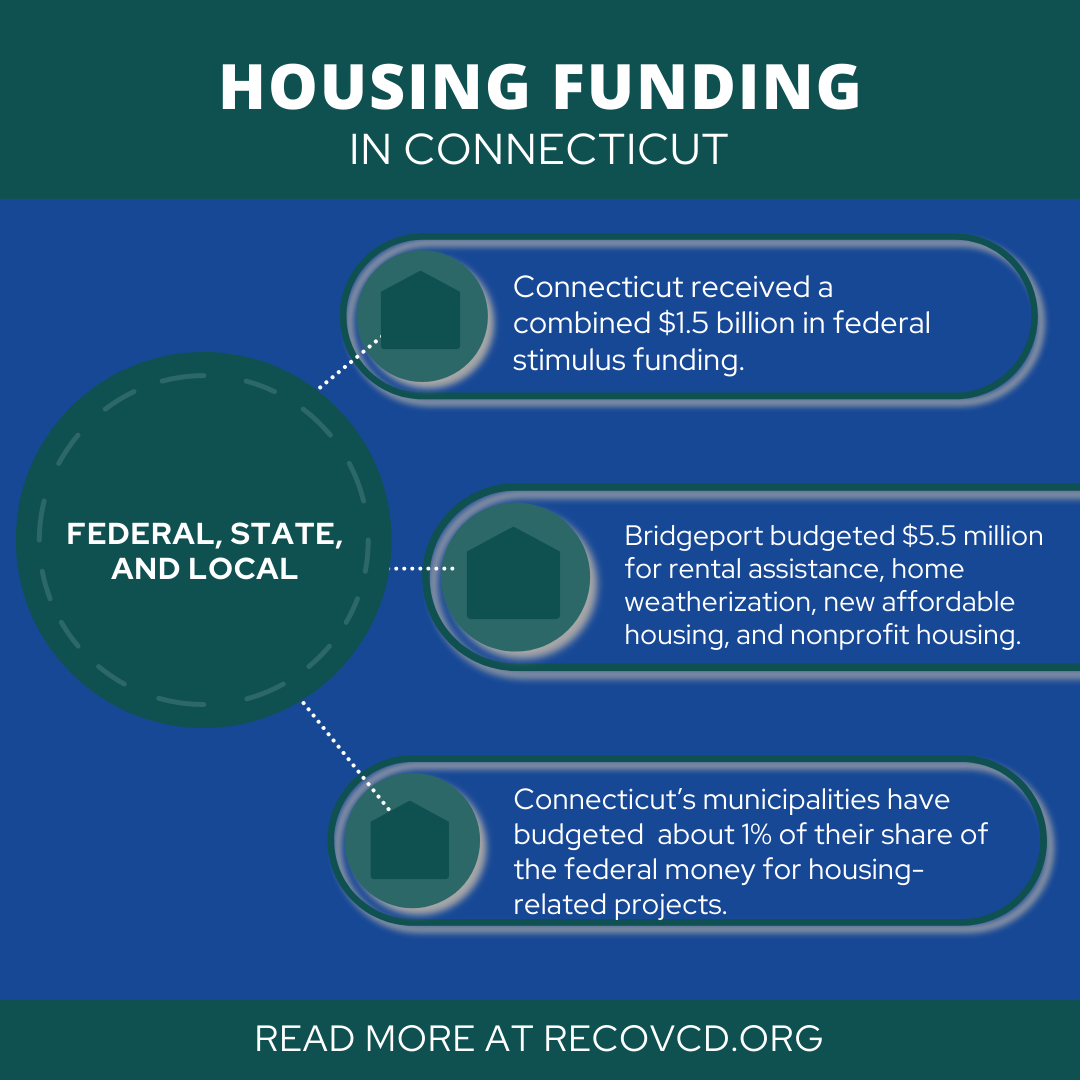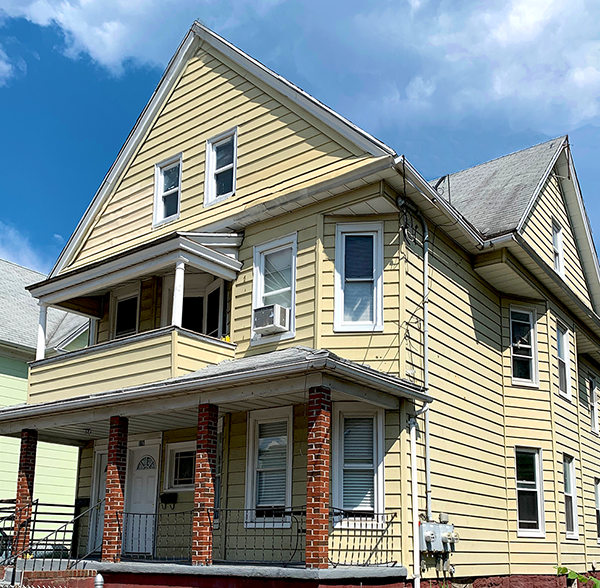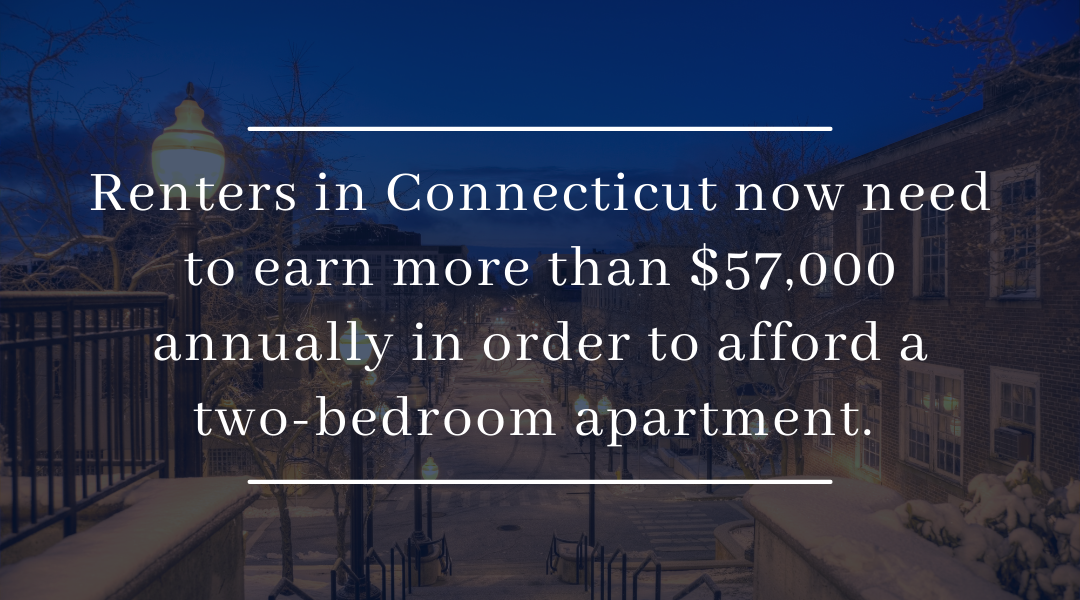As we’ve discussed in many of our previous blogs, affordable, stable housing is an essential part in every recovery journey, and thus, a vital topic to address when discussing addiction and longterm recovery outcomes. Read more about housing funding in Connecticut.
Affordable housing has been a rising issue across the nation for decades with mixed responses as a whole in terms of actionable solutions. One of the most recent attempts to address the housing crisis can be found within the American Rescue Plan Act of 2021. The federal rules developed for the American Rescue Plan Act enabled local officials to spend the funds on rent and mortgage assistance, housing-related planning, energy efficiency upgrades for people’s homes, assistance for those experiencing homelessness, or the development and preservation of affordable housing.
Under this plan, Connecticut received a combined $1.5 billion in federal stimulus funding over the past year to help in two major ways. First in the capacity to help people recover from the pandemic and second, to allow local officials to make necessary investments in their communities.
Underutilized Funds in Connecticut
Bridgeport, Connecticut’s largest city, and home of Recovery Community Development, has budgeted $5.5 million for rental assistance payments, local home weatherization, the development of new affordable housing, and funding for nonprofits that provide transitional housing to individuals and families. This is good news for those in need in the larger cities of Connecticut where we’re seeing these kinds of budget pushes, but the same cannot be said of a lot of the smaller cities and towns throughout Connecticut.
Data collected by the federal government this past April shows that Connecticut’s 169 municipalities have budgeted only about 1% of their share of the federal money for housing-related projects. The big question is, with so much available to Connecticut’s towns and cities to work on housing improvements, why are so few taking advantage of the funds?
This seems like an obvious missed opportunity for Connecticut as a whole to make substantial strides towards a more equitable and affordable housing situation. According to data collected in 2020 (the most recent affordability analysis), Connecticut is ranked 40th out of 50 for affordability.
As we look at this question of why the budgets have accounted for so little of the available funds, it is important to remember that Connecticut is one of a few states with no county government. In most states, counties are the primary governing entity below the state government. Unlike most of it’s counterparts, Connecticut hasn’t had that level of local government since the Connecticut General Assembly abolished all county governments in 1960.
Diffused Responsibility
Instead, in situations presented like that of the American Rescue Plan, the law provides a mechanism for this funding to be distributed proportionally to towns and cities based on their share of a county’s population. Is this lack of county government responsible for the minuscule distribution of the available funding to Connecticut’s towns and cities? Affordable housing advocates purport that many local leaders don’t view housing as a municipality’s responsibility. Thus, though funding is readily available, it is essentially seen as somebody else’s problem.

The Bottom Line
According to data from the National Low Income Housing Coalition, Connecticut as a whole currently lacks an estimated 85,400 homes that are available and affordable to renters with extremely low incomes. Renters in Connecticut now need to earn more than $57,000 annually in order to avoid spending more than a third of their income on a two-bedroom apartment – in other words the level that is considered affordable. Meanwhile the average salary for Connecticut residents ranges wildly from 24,800 USD (lowest average) to 438,000 USD (highest average).
With so many of Connecticut’s low income and vulnerable populations at risk of instability, or already in dire straits, the likelihood of a number of unpleasant outcomes become far more likely – including relapse.
Providing safe, supportive, and affordable sober housing is vital, and we will continue to work on expanding our program to reach more, and more individuals in need. But we can’t do it alone. Donations play an important role in all of our renovation projects and make a difference in how many people we can help on their journey towards longterm recovery outcomes.

Offering a recovery-friendly home to those that need it is what drives us. To that end, we are always working towards improving and expanding our offerings. We are currently renovating our third sober housing unit, Brooks Street House. Once completed, this new location will provide nine more men the safe, supportive, and affordable accommodations they need throughout their recovery journeys.
Make a difference today. Donate.
